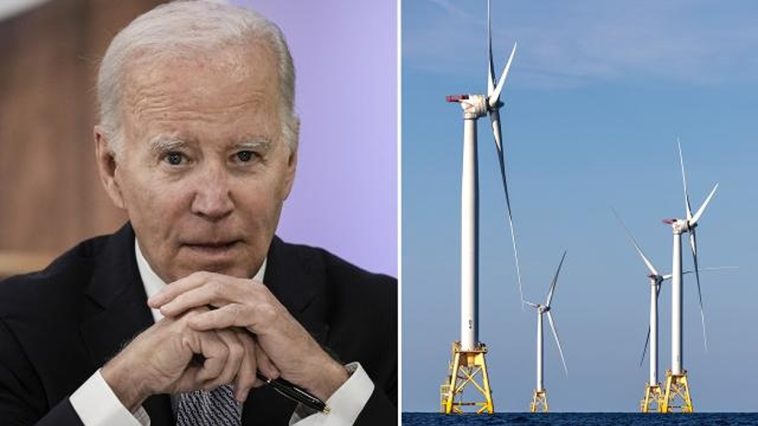LISTEN HERE:
In an under-the-radar move, the US government allowed an energy organization working on an offshore wind venture off Massachusetts’ coast to forgo taxpayer protection fees. This came to light after assessments of internal paperwork by independent parties.
Specifically, the Bureau of Ocean Energy Management (BOEM) notified Vineyard Wind about the relinquishment of a decommissioning costs assurance fee on June 15, 2021, according to a letter procured by civic watchdog Protect the Public’s Trust (PPT).
Under federal law, developers are typically required to remit such a fee before initiating construction on their leased land, which ensures that the federal property will be restored to its original condition upon lease termination.
Michael Chamberlain, the director of PPT, aired his dismay to the press, rhetorically asking if there existed worse optics than this scenario. The director’s criticism stems from the perception that this act undermines the administration’s declaration of being the ethical standard-bearer.
Chamberlain highlighted that the recent Deputy Interior Secretary, Tommy Beadreau, was at one time professionally connected with the Vineyard Wind project. Beadreau served as a legal advisory at Latham & Watkins and has shown to have formerly represented Vineyard Wind, as evidenced by his 2021 financial disclosure.
The timing of the fee waiving and Beadreau’s subsequent appointment at the Department of the Interior (DOI) raised eyebrows. The approval of Vineyard Wind’s request to waive the development fee arrived just a week before Beadreau left Latham & Watkins and took on his role at DOI.
However, in an email statement, Beadreau, who exited DOI in late October for a different firm, emphasized his lack of involvement in the fee-waiver decision and brushed off any implicit conflict of interest due to his past engagement.
According to communique?s acquired by PPT, BOEM specified that Vineyard Wind would not be obligated to bear the development cost until 15 years post the project’s operational commencement, which spans a 20-year power purchase agreement.
It’s worth noting that Vineyard Wind first petitioned for this concession in December 2017, but this was rejected by the then administration, prompting the developer to reapply in March 2021.
In their June 2021 correspondence to Vineyard Wind, the BOEM clarified its decision to drop the charge, highlighting the presence of risk mitigating factors including insurances covering any major incident disrupting operations. They also cited the application of tested wind turbine technologies and the execution of power purchase agreements. These, paired with the stable availability of wind energy, would ensure a reliable revenue stream over the project’s lifetime.
BOEM’s letter implied that this ‘regulatory break’ could ease the financial strain on Vineyard Wind, permitting the company to channel the saved capital into construction. This could expedite the project’s commencement. Additionally, the BOEM justified waiving the fee as a measure that ‘propels the generation and dissemination of energy from sources other than hydrocarbon derivatives.’
Supporting this decision, Meredith Lilley, an energy program officer at BOEM, admitted in an internal email that absolving the fee by August 2021 was necessary. It ensured Vineyard Wind could ‘procure financing and attain financial closure.’
The Massachusetts project, a massive undertaking generating 800 megawatts, is a cooperative operation between Danish energy innovator Copenhagen Infrastructure Partners and North-eastern US utility service provider Avangrid. The project, proposed many years prior, gained momentum with the inception of the Biden administration.
In May 2021, the US government officially gave the project the green light, creating a historic moment as the inaugural utility-scale offshore wind farm to receive federal endorsement.
Then BOEM, in July 2021, sanctioned the construction and operations proposal of Vineyard Wind. A few months later, DOI Secretary Deb Haaland, along with ex-Governor of Massachusetts Charlie Baker and other dignitaries, performed the symbolic groundbreaking ceremony in Barnstable, Massachusetts.
Post Vineyard Wind’s approval, BOEM issued permissions to an additional five utility-scale offshore wind projects. This aligns with the Biden administration’s ambition to set up 30 gigawatts of offshore wind power capacity by 2030. However, one such project, the offshore venture Ocean Wind 1 in New Jersey, was eventually dropped by its developer in October, citing numerous economic determinants.
Simultaneously, the Biden administration seems to have trained its sights on the traditional oil and gas sector. While development fees for green energy production have been excused, measures ramping up costs for hydrocarbon producers have been unveiled. In July, DOI proposed a plan to adjust the bonding requirements, revise royalty rates, and raise minimum bids for onshore fossil fuel leasing.
This action will significantly increase developers’ financial burden—which in stark contrast, has been eased for those in the green energy sector, specifically Vineyard Wind. The government’s divergent approach to these two energy sectors has raised various questions, leading to a subject of noteworthy debate.
To date, the responses from both BOEM and Vineyard Wind with regards to these matters remain undisclosed. However, the implications of these actions will continue to reverberate within the industry and could potentially catalyze changes in regulatory practices.
The ethical questions and the potential preferential treatment exhibited in this case might signal a shift in policy towards greener, renewable sources at the cost of conventional energy methods. While it is clear that Vineyard Wind stands to benefit from the waived fee, only time will reveal the overall impact of this decision on other industry players and the sector’s future as a whole.
Thus, as green energy continues to take center stage in the administration’s policies, one cannot help but foresee a significant transition in the American energy industry. With both supportive and critical voices echoing through the halls of both public and corporate offices, the long-term effects of these decisions eagerly await analysis from experts.


